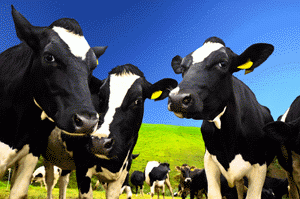
By Gareth Vaughan
ANZ, the country's biggest rural lender, says it's positioned for a period of renewed growth in the agriculture sector after a period of "re-balancing."
This is a shortened version of this article. The full version was published in our email for paying subscribers. See here for more details and how to subscribe.
6 Comments
well it depends if they talk amongst themselves
ANZ review of US dairy export producers - page 27 to 41. Capital Cost: The other striking aspect (of US large dairy farms) was that the amount of capital required to set up a dairy farm was less than half of that in New Zealand (on a per kg MS basis). This was largely due to substantially lower land values. http://www.anz.co.nz/resources/1/2/1201e46b-35ac-4a57-8e15-8a78ba401665/ANZ-AgriFocus-20141015.pdf?MOD=AJPERES and on the Revenue Account: .........This narrows down New Zealand’s operating cost competitive advantage from NZ$1-$1.8/kg MS to just NZ$0.50/kg MS when the cost of capital is included. Add in lower leverage and interest rates for US farmers courtesy of the US still being the world’s reserve currency, and other structural differences in their economy compared with New Zealand, and on an actual interest paid basis the gap would probably be even closer still.
Thanks Henry. The problem is .50c a kg Milk solids is less than .5 cents a liter and the US East Coast has a huge local market for fresh milk, as you know thats where the money is. They can afford to dump surplus milk on the world market below cost and still make a living as can the EU. 5c a liter could be wiped out by any number of minor market shifts or regulatory movements. ( fresh whole milk is $3.80 US a gallon at Trader Joes, Ca,)
So my question to you is , ' what do we do to regain our competitiveness', because it looks to me like we have missed the boat on this issue. That 5 cent advantage has been wiped out by cheap borrowing and cheap labour, we actually are no longer the cheap provider of bulk commodity milk products, that prize is going to to Eastern Europe ( Poland WMP up %40 last year) and South America. I don't see any plan B, is there a realistic one being we are so far from markets?
We have become, over regulated,over financialised and over taxed out of the international market. This also goes for many other industries, especially Wine and other labour intensive primary industries.
Its time we demanded meanful restructuring of costs. Think big infrastructure problems in AKL won't help down on the farm, vote catching policies and high immigration won't work in the long run, we are heading for systemic failure, our little socialist/crony capitalist experiment has failed. We have a bubble in rural land.
You don't need people like me consulting in the USA, taking 30 years of practical farming experience and using it to help bring about radical production increases in a low cost environment.
Don't know, times are changing.
http://d21uq3hx4esec9.cloudfront.net/uploads/pdf/141104_TFTF.pdf
bat and ball in the sense of those in the tent
loan security valuation/valuer/method (comparatble/productive/land use change)
servicing, long run MS rate, interest rate plug rate, servicing ratio...
arms length sales, who knows (apart from what one yourself would bid) just now:
Harcourts Southland rural manager Murray Jackson said 2014 had been on par with last year for sales but prices on average had dropped about 15 per cent.
There was still strong interest in properties in good locations from long-term dairy industry investors who were keeping the faith in spite of falling milksolid payouts, he said.
http://www.stuff.co.nz/business/farming/dairy/10701922/Huge-dairy-operation-for-sale
and they don't marke to market.


We welcome your comments below. If you are not already registered, please register to comment.
Remember we welcome robust, respectful and insightful debate. We don't welcome abusive or defamatory comments and will de-register those repeatedly making such comments. Our current comment policy is here.